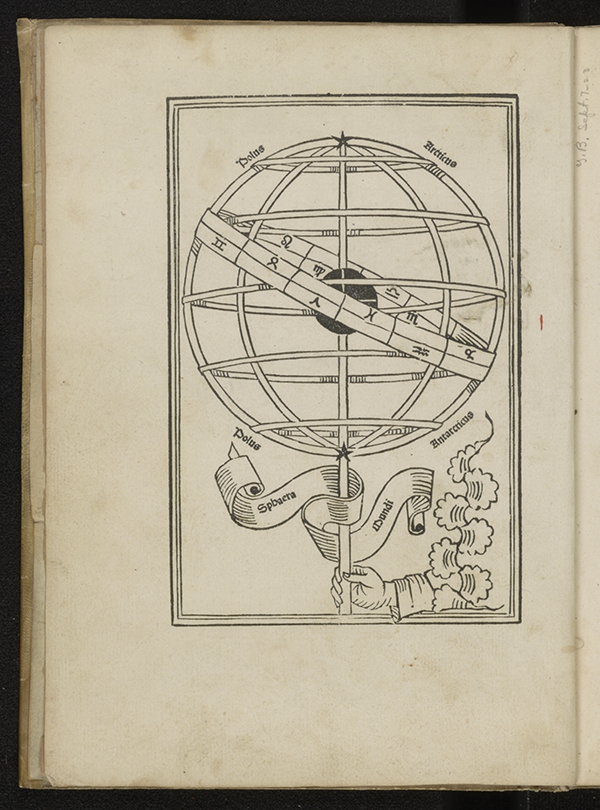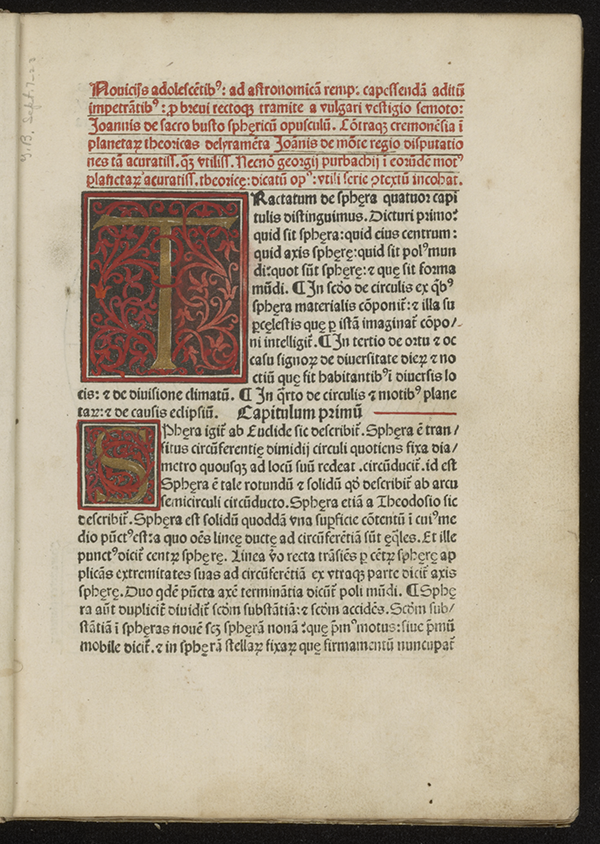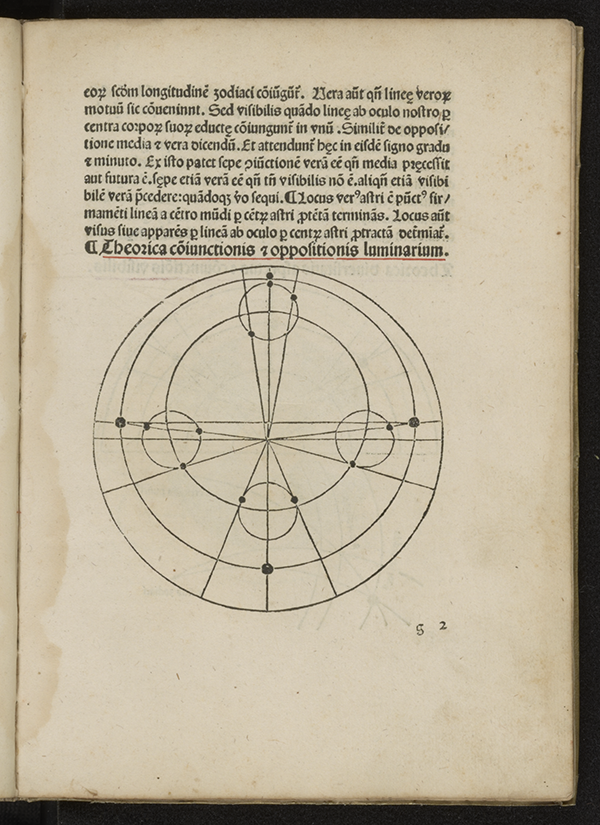- About MAA
- Membership
- MAA Publications
- Periodicals
- Blogs
- MAA Book Series
- MAA Press (an imprint of the AMS)
- MAA Notes
- MAA Reviews
- Mathematical Communication
- Information for Libraries
- Author Resources
- Advertise with MAA
- Meetings
- Competitions
- Programs
- Communities
- MAA Sections
- SIGMAA
- MAA Connect
- Students
- MAA Awards
- Awards Booklets
- Writing Awards
- Teaching Awards
- Service Awards
- Research Awards
- Lecture Awards
- Putnam Competition Individual and Team Winners
- D. E. Shaw Group AMC 8 Awards & Certificates
- Maryam Mirzakhani AMC 10 A Awards & Certificates
- Two Sigma AMC 10 B Awards & Certificates
- Jane Street AMC 12 A Awards & Certificates
- Akamai AMC 12 B Awards & Certificates
- High School Teachers
- News
You are here
Mathematical Treasure: Sacrobosco’s Tractatus de Sphaera

The Tractatus de Sphaera of Sacrobosco, first compiled in the 13th century by Johannes de Sacro Bosco, was the most influential pre-Copernican work on astronomy published in Europe. Based on Claudius Ptolemy’s Almagest and early Islamic contributions to astronomy, this work became the principal medieval university text for astronomy. By 1700 (long after it had been superseded by the work of Nicolaus Copernicus), it had gone through 200 editions. The frontispiece shown above is from the 1482 edition. Note the hand of God turning the sphere of the earth.

On the first page, shown above, Sacrobosco noted that his treatise on the sphere would be divided into four parts:
- first, discussion of a sphere, its properties, and the world as a sphere;
- second, the circles of which this material sphere was composed;
- third, the rise and significance of signs, i.e. astrology; and,
- finally, circles and the motion of the planets and the causes of eclipses.

The diagram above was used to illustrate the principles of a solar eclipse when the moon’s shadow passes the earth.
Sacrobosco (ca 1195–1256), as he was popularly called, was known by other names, including John of Holywood. He was a British monk and a professor at the University of Paris. While best known for this book on astronomy, he was also known for his Algorismus, a book on counting and arithmetic using the Indo-Arabic numbers. A complete English translation of Tractatus de Sphaera was made by Lynn Thorndike in 1949.
The three images above appear through the courtesy of the United States Library of Congress.
Frank J. Swetz (The Pennsylvania State University), "Mathematical Treasure: Sacrobosco’s Tractatus de Sphaera," Convergence (April 2014)




